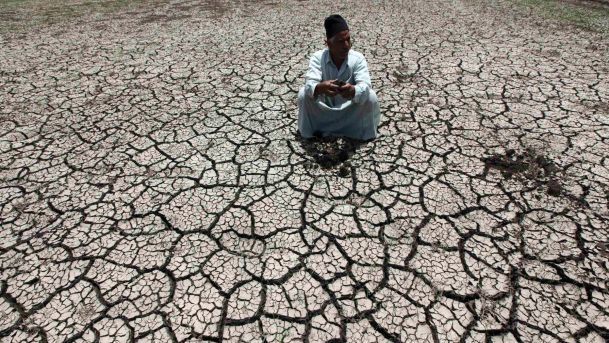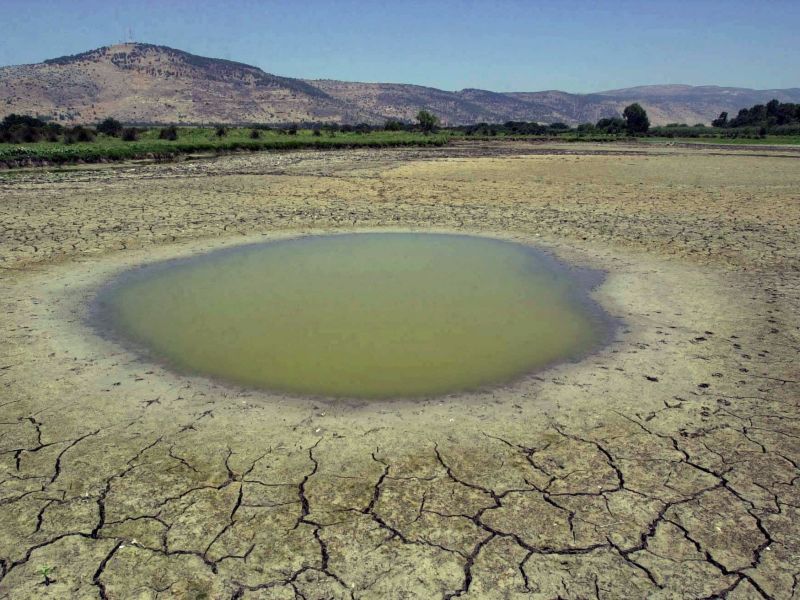Water In Crisis - Spotlight Middle East
Published on by Yoshimi Yoshida, Environmental Consultant in Social
The Middle East has experienced many environmental concerns lately. Water resources are becoming increasingly scarce, especially for the millions there who already lack access to sanitary water.

Some of these countries, including Yemen, the United Arab Emirates, Saudi Arabia, and Iraq, are facing unique problems that require global, immediate attention. Beside their neighboring location, one shared factor of all these countries is their lack of water resources and poor water management.
The Middle East has some of the largest oil reserves in the world, which produces most of the area's wealth. Even so, the region's climate and environment make living harsh. The Middle East requires water resources and suitable land for agriculture. Much of the land that is available for producing food is destroyed by increasing desertification.
Desertification is a sweeping environmental problem, with vast effects in countries such as Syria, Jordan, Iraq, and Iran. Universal causes for a spread of arid environment are unsustainable agriculture practices and overgrazing. Agriculture uses 85 percent of water in this region. It is common to misuse land by heavy irrigation in the Middle East.
In the area droughts are more frequent, and contribute to the changing landscape. The overuse of water in agriculture is affecting the countries' already undersized water resources.
Jordan, located in the Syrian Desert, and Yemen, on the southern tip of the Arabian Peninsula, both endure severe water scarcity in the Middle East. For example, Jordan's average freshwater withdrawal is less than ten percent of Portugal's average, despite being the same size. The cost of water in Jordan increased thirty percent in ten years, due to a quick shortage of groundwater.
Yemen has one of the highest worldwide rates of malnutrition; over thirty percent of its population does not meet their food needs. In recent years, Yemen has not been able to produce enough food to sustain its populations. Water scarcity has damaged the standard of living for inhabitants of the Middle East.
The United Arab Emirates, located on the Arabian Peninsula, is famous for its luxurious cities filled with lavish resorts, shopping, and attractions. The livelihoods of these extravagant emirates might create the assumption that water scarcity is not a problem for these rich states. In reality, however, the UAE is confronted with a serious depletion of their available water resources.
A report from the Emirates Industrial Bank in 2005 said that the UAE had the highest per capita consumption of water in the world. Additionally, for the past thirty years the water table of this region has dropped about one meter per year. At this current rate, the UAE will deplete its natural freshwater resources in about fifty years.
Even with a large amount of desalination plants to reduce water deficiency, the UAE needs to adjust its water use habits before its energy consumption doubles in 2020.
 Desalination plants are an overuse of water resources in the Middle East. Seventy percent of desalination plants in the world are located in this area, found mostly in Saudi Arabia, the United Arab Emirates, Kuwait, and Bahrain. While the plants produce water needed for the arid region, they can manufacture problems for health and the environment.
Desalination plants are an overuse of water resources in the Middle East. Seventy percent of desalination plants in the world are located in this area, found mostly in Saudi Arabia, the United Arab Emirates, Kuwait, and Bahrain. While the plants produce water needed for the arid region, they can manufacture problems for health and the environment.
The seawater used most in desalination plants has high amounts of boron and bromide, and the process can also remove essential minerals like calcium. Also, the concentrated salt is often dumped back into oceans where the increased salinity affects the ocean's environment.
The plants harm local wildlife and add pollutants to the region's climate. In addition, desalination is the most energy-costing water resource. The Pacific Institute explains that the high use of energy results in raised energy prices and higher prices on water produced, hurting the consumer.
The water produced can be beneficial towards substituting any lack of freshwater, but these areas have tendencies towards overuse of their natural resources. Concerns with the large amount of desalination plants in the Middle East focus on the improper dependency they will cause, instead of encouraging alternate forms of water and energy and conserving freshwater.
The Middle East has numerous struggles with its current water resources, and the region needs more than one solution to generate an optimistic environmental position for the future.
Blog by Alexandra Barton
Source: The Water Project
Media
Taxonomy
- Water
- Public Health
- Water Scarcity
- Rural Water Supply & Sanitation
- Water Scarcity In Desert area
- Drought
- Desalination
- Solar Desalination
- Sustainable Desalination
- Long Term Capacity
- Groundwater Salinisation
- Geo-hydrology
- Capacity Building
- Land and Water Resources Management
- Government relations, politics and policy
4 Comments
-
Please click the Link to the original article so that you can ask Alexandra in person, perhaps. Thanks for your interest. And this Message is True to all people commenting here.
-
Thanks Alexandra ! for sharing some insights. Regarding the desalination plant's disposal to the waters is a shame. As an average the desalination plants provide water at a high energy cost, making it 50% of operational cost.
"Desalination plants on average use about 15,000 kilowatt-hours of power for every million gallons of fresh water that’s produced, the Pacific Institute said today in a report. In comparison, wastewater reuse draws as much as 8,300 kilowatt-hours of power for the same volume and importing a similar amount of water into Southern California requires as much as 14,000 kilowatt-hours of electricity, it said."
(Source: https://www.nap.edu/catalog/12184/desalination-a-national-perspective)
Now there microhydro systems which can offset a large proportion of power and reduce the cost of energy, using the KCT hydro-system, http://www.kcthydropower.com/. The system has already been well received in Australia, Europe, US, and open to low head hydropower generation applications worldwide.
1 Comment reply
-
Please click the Link to the original article so that you can ask Alexandra in person, perhaps. Thanks for your interest. And this Message is True to all people commenting here.
-
-
Do you have detailed information about the water supply in Saudi Arabia? What are the cost of producing water from desalination plants? How is the water supply in inner Saudi Arabia (especially for the mining industry) and the freshwater price there?
1 Comment reply
-
Dr. Leschhorn, there is little/no data available on regional or global level. No development report addresses this information gap at the moment. I can share you information regarding India and Australia. uchakarvarty@gmail.com. Best wishes
-
-
Desalination does not have to be carbon energy intensive and does not have to hypersalinize marine environments Please write for details of buoyant solar technology. rosjonesenvedu@hotmail.com